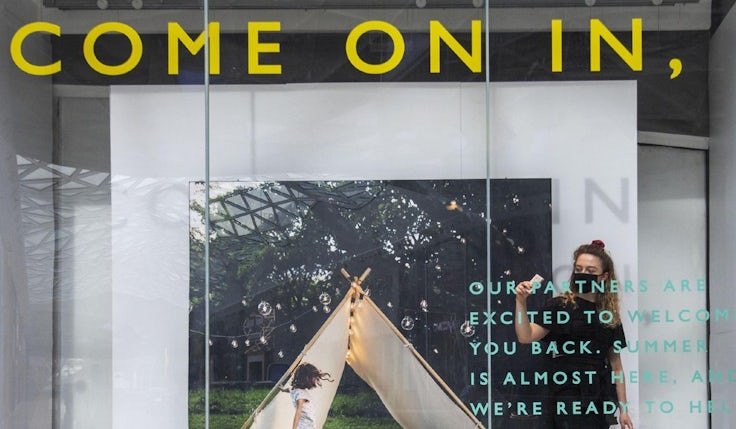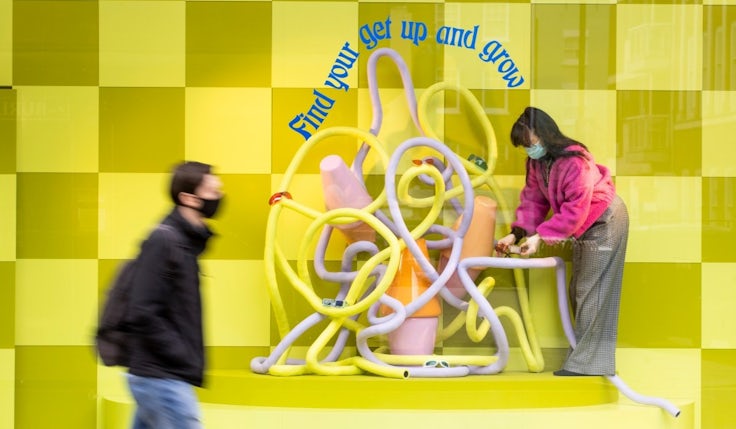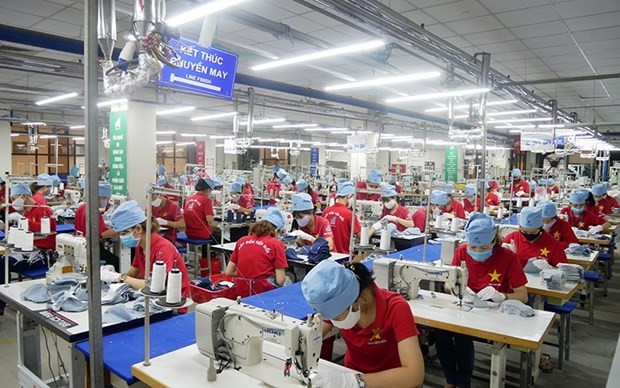How retailers are rising to the challenge of driving customers back in-store
John Lewis, Selfridges, M&S and Next have all taken different approaches towards the reopening of non-essential retail this week, but the real trial lies in the weeks and months ahead.

Topshop. Dorothy Perkins. Oasis. Warehouse. Cath Kidston. Burton. Six one-time high street staples which won’t be re-opening their doors today… or ever again.
The Covid-19 pandemic has taken a heavy toll on the UK non-essential retail market, with fashion retailers hit particularly hard by multi-month national lockdowns. The forced closure of physical stores has sparked a rapid consumer shift towards digital retail, with ecommerce growth at 46% in 2020, according to the Office of National Statistics – its strongest growth for more than a decade.
But non-essential retail stores are now back open for business and will be hoping to regain some lost ground by attracting customers back inside. It’s a challenge which retailers have approached in vastly different ways.
Most major retailers have been at pains to put in place and communicate their rigorous health and safety plans on reopening, with brands including Primark, Ikea and Next having promised increased cleaning, mask requirements, staggered entry systems and hand sanitiser facilities. Ikea has been among those to declare it will only accept cashless payment, limiting the physical handling of money between customers and cashiers.
Meanwhile, shopping centres Westfield London and Westfield Stratford City have launched a visual campaign – ‘Mask for Good’ – around their sites to encourage mask wearing and persuade customers to swap their single-use masks for a biodegradeable and reusable one.
According to retail analyst and managing director at GlobalData Retail, Neil Saunders, retailers are wise to emphasise their high hygiene standards as they reopen.
“The first challenge [in reopening stores] is in trying to persuade those people who are still a bit nervous from a health perspective to come out and shop physically,” Saunders tells Marketing Week. In the US, where shops have been open for a while, some groups of consumers have been reluctant to return to in-store shopping – especially older generations, he says.
“[Retailers] have to convey to customers that they’re creating a safe environment in which to shop,” he adds.
Beyond that, re-opening strategies among retailers have diverged. Both John Lewis and M&S’s clothing and home business have introduced a series of measures and innovations to try and tempt customers back in-store, having both suffered substantial knocks to overall revenue in 2020.
John Lewis notched up a £517m pre-tax loss in 2020, and last month confirmed that eight of its stores would be permanently closed. Meanwhile, after struggling over a couple of years with declining sales, M&S’s non-food revenue was down -40.8% in the first half of the 2020/21 financial year, with a 34.4% growth in online sales not enough to offset vanishing store sales.
On reopening, both retailers are offering increased rewards to customers. John Lewis has doubled the amount it pays customers for using its Beautycycle service until May, so they can return five items of hard-to-recycle product packaging in return for £10 off their next beauty purchase.
The retailer has also launched an exclusive collaboration with Vinterior, the online vintage and antique market place, which it says is in response to growing customer desire to buy products which have the longest possible life.
“We’re looking forward to reuniting customers with the joy of physical shopping, along with the excitement of our stores,” says Pippa Wicks, partner & executive director at John Lewis.
The department store is also keen to attract price conscious consumers with the launch of its “most affordable” own brand range.
John Lewis eyes price conscious shoppers with value own brand launch
Meanwhile, M&S is boosting its loyalty rewards for customers for two weeks, and one customer every day in every store will win their shopping for free. The retailer is also running a new campaign, ‘Bring On’, putting a spotlight on the products customers have been searching for online as social events start to return and summer starts.
Elsewhere, Selfridges is banking on experiences and its window displays to drive customers back in-store. The retailer has partnered with SoulCycle to open its first outside studio in the UK behind its Oxford Street store, and has launched an exclusive ‘Experience Concierge’ service in London, which includes floristry workshops, a gifting service, children’s parties and private screenings at The Cinema at Selfridges.

The ‘high street boom’
Taking an altogether different approach, Next’s CEO Lord Simon Wolfson has confirmed the retailer will not be allocating any of its marketing budget towards drawing consumers back to its bricks-and-mortars stores – despite having seen its in-store sales almost halve to £950m over the last financial year. Of its 700 stores globally, 500 are in the UK.
“The most important thing you can do to draw people back in is to open the doors,” Wolfson said earlier this month. “Of course there are things you can do to draw people back to stores, you can spend a lot of money doing that. The real question is whether it’s profitable.”
Wolfson added that Next has been unable to find any marketing activity that gets people into stores where the return justifies the capital spent. The retailer will instead continue to focus on growing its online business, where sales rose by £222m to £2.4bn last year, offsetting some of the loss of retail sales and helping the business maintain a healthy profit margin.
“So we won’t be spending money in order to attract people back to stores,” he continued. “But we’re fairly confident from our experience with the last two lockdowns that people will come back.”
For retail commentator Richard Hyman, Wolfson is likely to be proved right in his assessment.
“I think the main driver [of footfall] is the opening of stores. Build it and they will come is not a very reliable basis on which to build a business generally speaking, but on this occasion, having been starved of non-essential shopping, I think we’ll see a significant amount of people going shopping. I think there’s a lot of pent up demand,” Hyman predicts.
Data from Kantar supports this hypothesis. Kantar predicts a £3.9bn “high street boom” in the first week of reopening, reflecting the £3.8bn spent in high street stores in the week after non-essential retail re-opened in June last year, but with the added benefit of longer opening hours and growing confidence among older shoppers.
Simon Quirk, business unit director at Kantar, says: “Based on our data and experience after previous lockdowns, we know that shoppers are excited to get back to the high street and we’re expecting pent-up demand to fuel an immediate surge in sales.”
Non-essential retail recovered quickly after re-opening in 2020 and rebounded to around 75% of 2019 sales within two to three weeks, with footfall driven mainly by young people, according to Quirk. By August 2020, spending in bricks-and-mortar retail was back to pre-pandemic levels.
“While the pandemic has brought economic uncertainty for many British households, others have actually saved money in the past 12 months and we are predicting that spending will surpass last year’s levels. Clothing, homeware and outdoor stores are likely to perform well, as shoppers want to buy outfits for warmer weather and get their gardens ready,” Quirk continues.
While the pandemic has brought economic uncertainty for many, others have saved money and we are predicting that spending will surpass last year’s levels.
Simon Quirk, Kantar
However, for Saunders, opening the doors and waiting to see what happens is a play only stronger retailers in the market can afford to make. Others will need those special offers, in-store promotions and experiences to persuade consumers to engage.
“For the players like Next or Primark, there isn’t really a need to promote because those are very popular retailers and people are going to flock back to those stores,” Saunders says.
“But for some of the weaker players on the high street that perhaps don’t have the pulling power of these names, there may need to be a bit of promotion.”
Saunders says he has seen exactly that pattern in the US, with weaker retailers, which were likely already struggling pre-pandemic, having to be “a bit more creative” to pull in traffic.
Planning for the long term
In any case, as both Saunders and Hyman point out, the real challenge is not going to be piquing consumer interest during this first week or two of reopening. The challenge is going to be getting them to stay. Once the novelty of being able to shop in-store wears off, the likelihood is consumers will return to some of the online shopping habits they’ve picked up over lockdown.
Hyman believes there will be an important role for marketing to play in planning for this challenge now, with backroom market research more of a priority than front-end communications.
“It’s incumbent upon marketing to take account of the change in the nature of demand as it begins unfolding from 12 April,” he says. In the more than 40 years he’s worked in the retail market, nothing compares to the events of the last year, he adds, which means retailers have no basis from which to map out their strategy.
“Retailers, one way or the other, have got to take a view of what that shape of demand is going to look like in order for them to develop their stock allocation models and their pricing models. So I think [marketing] has got loads to do there.”
Disagreeing, the chief commercial officer at media agency Spark Foundry, which boasts retail clients including Asda, Currys, and Carphone Warehouse, argues that front-end communications will remain of fundamental importance as retailers look to pull consumers back from online long term.
It’s a time to make noise and make sure you are front of mind.
Steve Corley, Spark Foundry
“Both research and communications should be the priority,” Steve Corley says, predicting that the most successful retailers moving forward will be those that understand the nature and motivations of their customers, and the barriers to those that choose not to shop with them.
“Then use this information in your communications, but not talking to consumers I believe is a mistake,” he says.
Corley suggests that while the shift to online has accelerated over the pandemic, creating with it a “culture of bargain hunters”, customers still want to touch, feel and experience shopping. Retailers therefore need to “sell” themselves more than ever, communicating what it is they offer which differentiates themselves from the competition and what value they provide to justify any additional cost.
“This is where a store can really help,” he says. “It needs to become a true shopfront of what a retailer is all about: your culture, your ethos, your brilliant people you have working for you. It needs to be far more experiential. Where consumers get to experience products, meet the experts, get unrivalled and unbiased advice, where retailers show what they are all about.”
Corley adds: “However, in the future, it does not matter where your consumers buy from you [in store versus online] as long as they are buying from you. Give the consumer what they want, when and how they want it. If they want to shop online, make it seamless and easy, if they want to shop in-store then make it an experience they won’t forget, be truly omnichannel.”
But ultimately, it’s not a time for retailers to be quiet, he adds. “It’s a time to make noise and make sure you are front of mind.”



 Print the article
Print the article